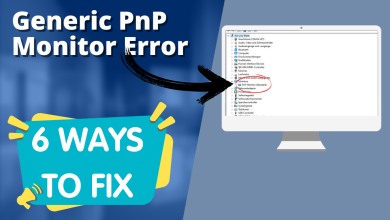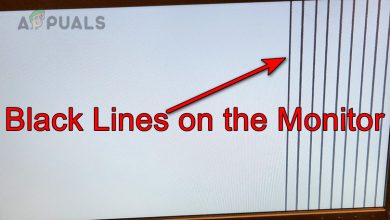How to Fix Taskbar Icons Missing After Reboot on Windows 11
If you have become a Windows Insider, you assumed the fact that while you’re getting to test the Dev, Preview & Beta versions of Windows 11, you will some system errors or bugs that will annoy you and won’t let you do your thing. Through the list of errors that were reported by other insiders, the missing taskbar icons after reboot is one of the common ones.
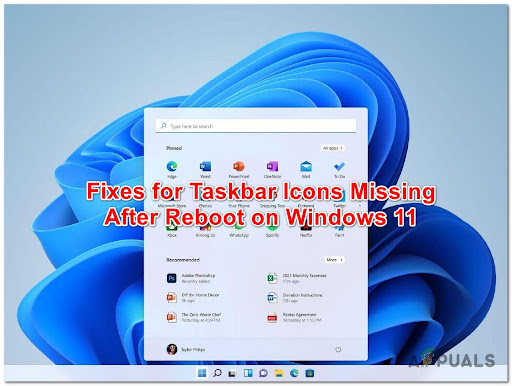
This missing taskbar error has occurred before on previous Windows versions, causing the users the same problems until Microsoft finally managed to fix it. We all remember the dreadful issue where taskbar icons couldn’t be moved on Windows 10.
Unfortunately for us, early adopters, the same issue is making its return on Windows 11.
After investigating this particular issue, it’s clear that this issue mostly appears after rebooting the system. Only a few people are reporting that they started to encounter it after installing the latest Windows Update.
If you’re facing this issue, you’ll know – all the icons from the taskbar disappear, even the icons from the bottom right corner, not even seeing the date and time. This missing taskbar issue prevents people from using their PC properly, not even being able to see which applications are opened and access items from their taskbar.
How to Fix Taskbar Icons Missing on Windows 11?
Even with the fact that Microsoft has not yet released an official hotfix for this particular issue, regular users have already come up with a few possible fixes that will make your taskbar reappear. And as luck would have it, all of them are easy to follow and to replicate on your own.
Here are a few common repair methods that other affected users have successfully used to make their taskbar icons re-appear on Windows 11:
- Restarting the Windows Explorer process – This is by far the most popular fix for this particular issue. There are a lot of Windows 11 early adopters confirming that this was the only thing that helped in their particular situation, but there’s a catch. In most cases, this fix is only temporary as the issue will return during the next PC startup.
- Re-signing in with your Microsoft account – As it turns out, this problem can also be rooted in the Microsoft account that you currently have connected to your Windows 11 PC. By signing out of your current Microsoft account, you’ll end all the session belongings forcing what’s essentially known as a soft reset.
- Changing the date to the correct one – This might look like an unlikely culprit, but a lot of affected users have confirmed that all their taskbar icons have magically reappeared after they took the time to modify the date & time to the actual values.
- Removing Problematic Iris Service Registry Key via Task Manager – Another potential culprit that might cause this issue is the Iris Service. According to some users, an underlying issue affecting this component might crash down the entire Taskbar functionality and make every icon disappear. Fortunately, you can fix this issue by using Task Manager to create a task that will remove the Iris Service Key that’s causing this behavior.
Now that you have familiarized yourself with every fix and subsequent culprit that might cause your Windows 11 OS to behave this way, start troubleshooting your particular scenario by following the guides below.
Restart the Windows Explorer process from Task Manager
If the issue you’re dealing with is actually rooted in an issue related to the Windows Explorer process, you’ll get off easy.
In this case, it should be enough to restart the Windows Explorer process using Task Manager. After you do this, wait a couple of seconds and you should see how your taskbar begins populating again.
Follow the instructions below to restart the Windows Explorer process using Task Manager and restore your Taskbar icons on Windows 11:
- Open Task Manager by pressing CTRL + Alt + Delete and click on it, or press CTRL + Shift + Escape and it will open the Task Manager directly.
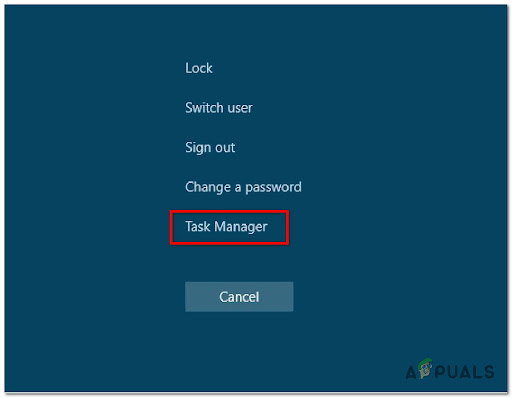
Opening up Task Manager - After the Task Manager appears on your screen, ensure that you’re using the expert interface. If the simple interface is opened by default, click on More details using the drop-down menu at the bottom.
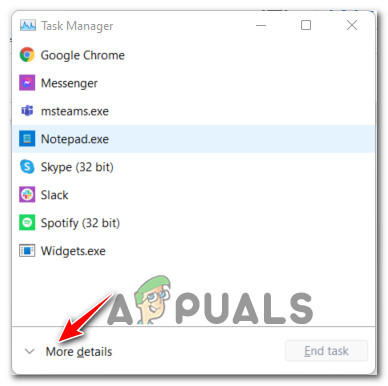
Open Task Manager with More details - Once you’re inside the expert Task Manager interface, access the Processes tab at the top.
- Next, scroll down until you found Windows Explorer, then right-click on it and click on Restart.
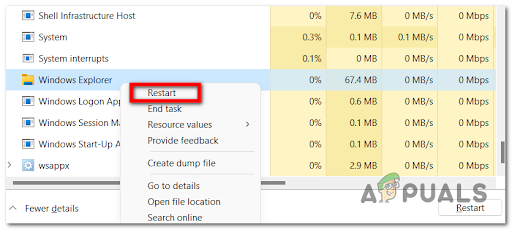
Restart the Windows Explorer process - Once you’ve done this, wait for a couple of seconds and see if your taskbar starts being populated with items.
If nothing happens after you restart the Windows Explorer process, move down to the next potential fix below.
Sign out of your Microsoft account
According to a lot of affected users, this particular issue can also be tied to the Microsoft account that you’re currently using on Windows 11.
If this scenario is applicable, you should try signing out of it in order to force all the opened applications and other sessions belonging to the end. If the issue is related to your account, this might also make the taskbar icons reappear.
Note: As far as we can tell, this problem is only reported to Windows 11 PCs that are using a Microsoft account. If you find the method below to be effective, you should also consider connecting a local account to avoid the resurfacing of this issue in the future.
Follow the instructions below to sign out of your current Microsoft account, then back in:
- Make sure that you don’t risk losing any files by saving any task that you’re currently doing.
- After you do this, simultaneously press CTRL + Alt + Delete, then click on Sign out.
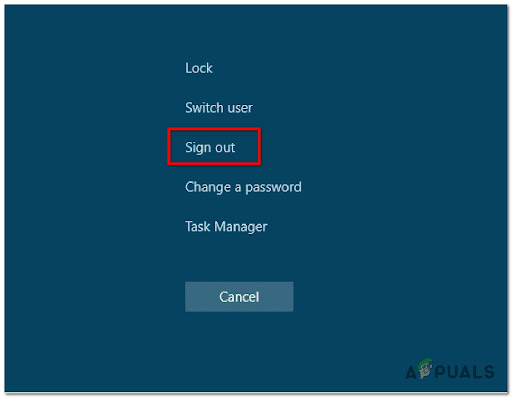
Accessing the Sign Out screen - This action will take you back to the starting screen that appears when you turn on the computer.
- Once you get there, sign in to your account and see if the account appears now.
If the same kind of issue is still occurring, move down to the next potential fix below.
Change the date on your PC
I know this seems like an unlikely culprit, but a lot of affected users have confirmed that the issue was resolved entirely after they’ve realized the date & time is wrong and change them to the correct values.
There’s no official explanation from Microsoft detailing why this fix is effective for so many users yet, but early Windows 11 adopters are speculating that the taskbar functionality probably crashes if your OS is unable to verify the date & time against the expected values in your area.
To learn how to change the date of your Windows 11 PC and force the missing taskbar icons to return:
- Open Task Manager by pressing CTRL + Alt + Delete and click on it, or press CTRL + Shift + Escape and it will open the Task Manager directly.

Opening up Task Manager - Once you’re inside Task Manager, ensure that you are using the expert interface. If you aren’t click on More details on the bottom of the screen.
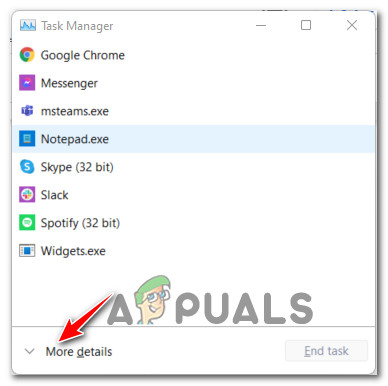
Opening up the More Details screen - Once you’re inside the expert interface of Task Manager, use the ribbon bar the top to click on File, then click on Run new task from the context menu.
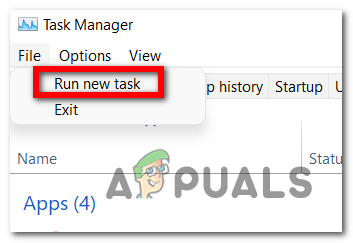
Running a new task in Task Manager - Once you’re inside the Create new task window, type ‘control’ inside the Open box, then check the box associated with Create this task with administrative privileges, then click on Ok.

Running a control task from Task Manager - Once you’re inside the classic Control Panel interface, use the search function (top-right corner of the screen) to search for Date & Time. Then from the list of results, click on Date and Time.
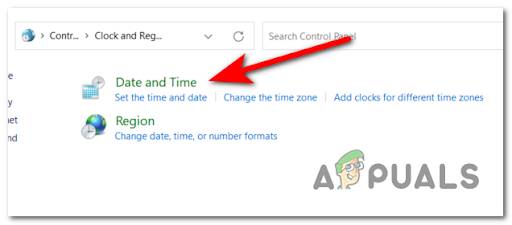
Opening up the Date & Time window - After that, click on Change date and time, and change the date to the actual dater and time and click on OK, then click on Apply then reboot your PC. Your missing taskbar problem should be fixed.

Adjusting the Date and Time Settings Once the modification is complete, reboot your PC and see if the taskbar icons return once the next startup is complete.
If the same kind of issue is still occurring, move down to the next potential fix below. s
Use CMD to remove the Iris Service Registry key
As it turns out you can expect to encounter this particular issue because of a malfunctioning Iris Service.
Note: This service is part of Windows Spotlight and it’s mostly responsible for fetching the Bing wallpaper of the day, providing lock screen suggestions, and more stuff related to the aesthetic of Windows 11.
If you find yourself in this particular situation, the fix is simple – you’ll need to open the expert Task Manager interface and create a Command prompt task that will essentially get rid of this service.
But don’t worry as you won’t lose this functionality forever – Microsoft will eventually realize that the Iris Service is missing from your PC and reinstall a healthy equivalent.
Follow the instructions below to remove the Iris Service .reg key via a Task Manager task:
- Open Task Manager by pressing CTRL + Alt + Delete and click on it, or press CTRL + Shift + Escape and it will open the Task Manager directly.

Opening up Task Manager Note: If your OS opens the simple Task Manager interface by default, click on More Details from the context menu at the bottom.
- Now that the Task Manager appears on your screen, click on File from the ribbon bar at the top, then click on Run new task from the context menu that just appeared.
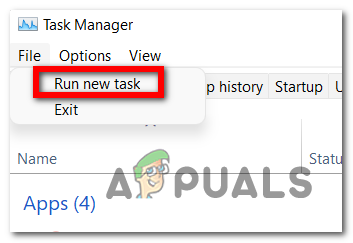
Running a new Task via Task Manager - On the next screen, type ‘cmd’ inside the blank space next to where it says Open, then check the Create this task with administrative privileges and click on OK.
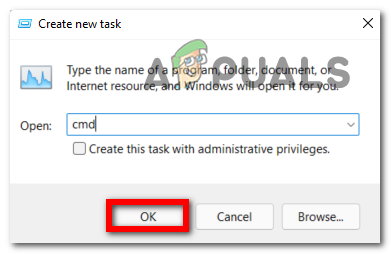
Creating the CMD task with Task Manager - Once you’re finally inside the elevated CMD prompt, type the following command and press Enter:
reg delete HKCU\SOFTWARE\Microsoft\Windows\CurrentVersion\IrisService /f && shutdown -r -t 0

Removing the Iris service - Upon running this command, your PC will reboot automatically after the Iris service is taken care of. Upon booting back up, you should see your taskbar icons reappearing inside your Windows 11 Taskbar.


